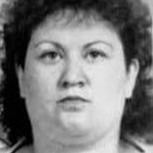
Maria Gruber
Summary
Name:
Nickname:
Lainz Angels of DeathYears Active:
1983 - 1989Status:
ReleasedClass:
Serial KillerVictims:
49+Method:
DrowningNationality:
Austria
Maria Gruber
Summary: Serial Killer
Name:
Maria GruberNickname:
Lainz Angels of DeathStatus:
ReleasedVictims:
49+Method:
DrowningNationality:
AustriaYears Active:
1983 - 1989bio
Maria Gruber was only 19 years old when she began working as a nurse’s aide at the Geriatriezentrum am Wienerwald in Lainz, a large geriatric hospital in Vienna, Austria. Like the other women who would eventually form the deadly alliance known as the “Lainz Angels of Death,” Gruber held a low-level healthcare position, responsible for basic care and support of elderly patients, many of whom were vulnerable, frail, or incapable of defending themselves.
Gruber’s life before the murders remains largely obscure, as Austrian media and legal protections for convicts kept many personal details shielded. What is known is that she was young, impressionable, and likely drawn into the escalating acts of violence under the influence of Waltraud Wagner, a colleague who initiated the killing spree. Gruber’s background did not suggest a history of violence or criminal behavior prior to her work at the Lainz facility.
murder story
The series of murders at the Lainz Geriatric Hospital began in 1983, when 23-year-old nurse’s aide Waltraud Wagner gave a patient a fatal overdose of morphine. Rather than being repulsed by the act, Wagner later admitted she was thrilled by the sensation of “playing God.” She recruited her co-workers, Maria Gruber, Irene Leidolf, and eventually 43-year-old Stephanija Meyer, into what became a covert killing group operating within the hospital.
The four women devised a cruel and effective method of killing: one would hold the patient's head and pinch the nose while another poured water into the patient’s mouth, essentially drowning them in their bed. Because many of the elderly patients were already suffering from fluid-related illnesses, this method was nearly impossible to detect through autopsy.
The group targeted patients they considered burdensome—those who were frail, dependent, or simply irritating. However, many victims were not terminally ill. Between 1983 and 1989, the group confessed to killing at least 49 patients, though authorities suspected the true number could be as high as 200.
Their crimes went unnoticed for years, partly due to the hospital’s lack of oversight and partly because of the silent complicity or negligence of the institution. In fact, when investigators tried to examine a suspicious death in 1988, hospital staff reportedly resisted cooperation, creating a "wall of silence."
The women were finally caught when a doctor overheard them bragging about their latest murder at a local tavern. This led to an investigation that shocked the Austrian public.
In 1991, Maria Gruber was convicted on charges of manslaughter and attempted murder. She received a 15-year prison sentence, significantly shorter than her accomplices, Wagner and Leidolf were both sentenced to life for multiple murders.
Despite public outrage, Gruber was quietly released from prison several years before 2008 and reportedly assumed a new identity. Her release, along with the later release of the other women.